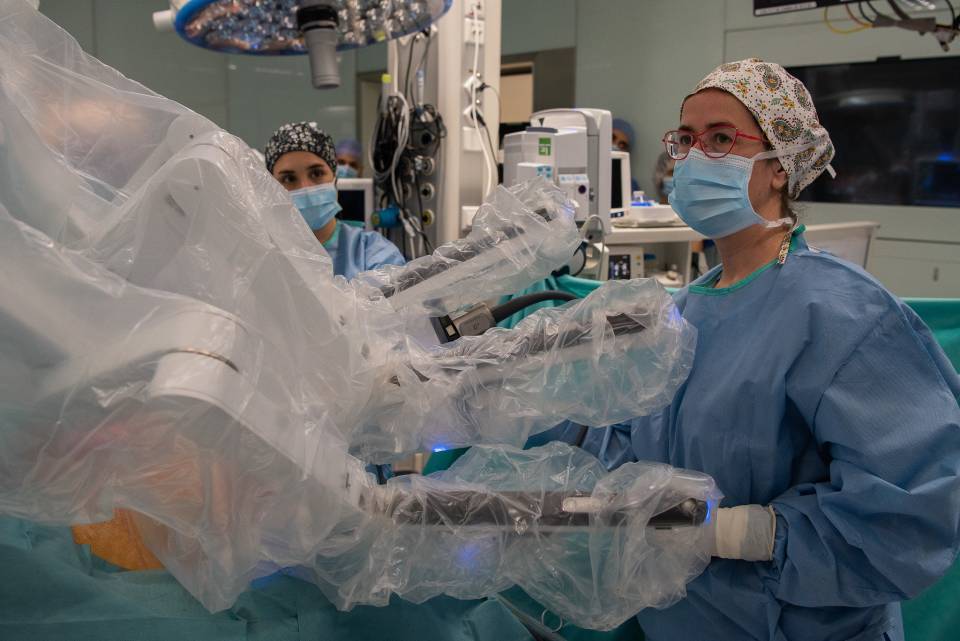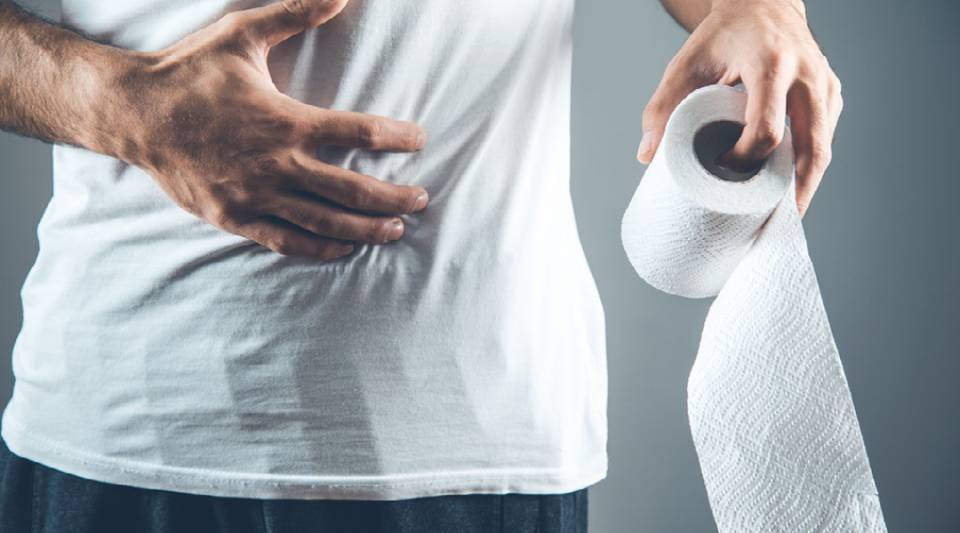Living with Chronic Kidney Failure
Patients with chronic kidney disease must follow both the immunosuppressive therapy guidelines to avoid organ rejection as well as the appointment schedule in order to detect any loss of function in the new kidney as early as possible. Patients are also recommended to follow a healthy lifestyle.
Chronic kidney disease patients must visit their health centre to receive haemodialysis sessions, follow dietary recommendations and adhere to their medication regime.
In the case of peritoneal dialysis, patients must complete the procedure in their own homes on a daily basis, follow dietary recommendations and take their medication.

Choking and swollen legs. This occurs due to an excess of fluids; the volume of daily fluid intake should be checked and the dose of diuretics may need to be adjusted.

Weakness in the legs. Possibly due to an excess of potassium in the blood. Patients must modify their diet because excess potassium is also toxic for the heart.

Fatigue. Fatigue could be caused by anaemia, which is often associated with chronic kidney disease, or it could be indicative of a sudden decline in kidney function.

Picor. Se debe a la sequedad de la piel que acompaña la insuficiencia renal crónica y/o a niveles elevados del fósforo. Es importante usar cada día crema hidratante corporal y reducir el consumo de alimentos ricos en fósforo.

Náuseas, vómitos. Puede sugerir que presenta una estado avanzado de insuficiencia renal.
Dietary control is one of the most important pillars when striving for an optimal treatment outcome in the case of chronic kidney disease. This is because the kidneys have to eliminate the body’s waste products and help balance the levels of water and minerals in the blood.
If chronic kidney disease has been diagnosed, then the kidneys cannot control these substances properly and so they accumulate in the bloodstream and negatively affect body function. That is why it is essential to follow a suitably adapted diet in order to slow the disease’s progress and/or avoid complications.
Patients must also bear in mind that certain treatment recommendations will change in function of the disease’s progression or the choice of renal replacement therapy.

Energy intake. The human body takes its energy supply from carbohydrates, fats and proteins. Large amounts of protein can accelerate the progression of chronic kidney disease; therefore patients who do not yet require dialysis must moderate their protein intake. As such, they primarily take their energy from starchy foods, e.g., bread, pasta, rice, potatoes, pulses, etc., from the fats found in foods and olive oil, which is the first choice for any added fat. Furthermore, patients need to maintain a healthy body weight to avoid complications associated with being overweight or underweight.

Proteins. A high protein intake worsens disease progression and leads to protein in urine. Kidney patients are advised to eat a daily ration of 100 g of protein-rich foods (meat, fish, eggs, etc.). If receiving dialysis, then this intake increases to at least two rations per day. This is because the body’s protein needs increase during both haemodialysis and peritoneal dialysis.

Sodium (NaCl). Salt increases blood pressure and accelerates chronic kidney disease progression, hence it is important to reduce salt intake. Dietary salt intake must also be controlled when receiving dialysis to avoid fluid retention in the body’s extremities (oedemas) and, in extreme cases, lungs (acute pulmonary oedema). This can be done by avoiding preserved foods, precooked meals, salty snacks, etc. and by seasoning meals with aromatic herbs and spices to eliminate the negative effects of salt.

Potassium (K). Potassium is a mineral found in many foods but certain fruits and vegetables, potatoes, pulses and nuts should be noted for their high potassium content. It is a vital mineral required to maintain correct body function, particularly muscle function, but an excess is dangerous as it can affect heart rate. Patients must control which foods they eat and how often, besides choosing cooking methods that help eliminate potassium, such as soaking and boiling.

Phosphorus (P). A controlled phosphorus intake depends on the identification of its origin. If the food is of plant origin (particularly pulses and nuts), then only a small portion of the phosphorus content is absorbed and consequently they can safely be eaten twice a week. If the food is of animal origin (meat, fish, dairy products, etc.), then a large portion of the phosphorus content is absorbed and so the daily intake of these elements should be moderated. If the phosphorus derives from industrial origins, e.g. an additive, then it is fully absorbed and its consumption must be strictly limited. To this end, patients should read food labels to avoid those with ingredients featuring the “phos-” prefix (e.g. phosphoric acid); these are typically found in cured meats, cola-type soft drinks, etc.
Pukono comes from a play on words in Catalan, puc o no? (can I or can’t I?), revolving around the letters P and K, which represent two of the nutrients (phosphorus and potassium) to be controlled in cases of kidney disease. It is a straightforward, intuitive application (available in Catalan, Spanish and English) that uses a traffic light rating system to indicate whether or not a certain food is recommendable for patients with high blood pressure or kidney disease. It is available for both Android and iOS. The dietary recommendations provided by this application are based on a Mediterranean diet. Maybe they do not fit in with your dietary habits so you should not forget to discuss them with your medical team.

Fluid intake. Kidney disease patients must maintain a good level of hydration, mainly based around water, infusions, broths, etc., but in certain cases fluid intake must be limited according to the doctor’s indications. For example, patients produce very little or no urine while receiving haemodialysis and therefore it is vitally important that they control their fluid intake to avoid accumulating excess weight. Recommendations are to drink no more than 500 mL of fluid per day, taking into account not just water but also milk, coffee, fruit juices, soups and others.
It is important for patients with diabetes to maintain good control over their blood sugar level in order to slow the progression of their chronic kidney disease. The medical team may change diabetic patients’ medication or insulin schedule for two reasons: (i), they may have to increase their intake of complex hydrocarbon-rich foods to compensate for the reduction in protein-rich foods; and insulin remains in the blood for much longer.
Various changes need to be made and they can sometimes present a real challenge. Diabetic patients are therefore advised to visit a nutritionist to help them adapt the dietary changes according to their state of health, lifestyle and the type of dialysis they opted for, if any.
Patients must be aware that their diet will need to be adjusted according to the different stages of the disease and the dialysis they receive.
RecuerdaMed is a mobile phone application stores a full and accurate list of the patient’s medication which means they, or their carer, can monitor what they are taking very closely and later check it with the healthcare professionals who will recommend any changes, if required. The app can store warnings about allergies to excipients and photographs of containers to avoid any errors when taking medications. Alarms can also be set to help remind users when to take medications. It is available for both Android and iOS.
Following a more active lifestyle and regular physical exercise provide a series of benefits with positive repercussions on overall health and quality of life, regardless of which renal replacement therapy is being followed.
Chronic kidney disease, during any stage and under any treatment, entails a deterioration in physical condition. For example cardiovascular endurance generally decreases (lower levels of maximum oxygen consumption) and the musculoskeletal system tends to present muscle atrophy (loss of strength), sarcopenia (loss of muscle mass), fatigue/tiredness, cramp and pain, amongst others. Patients with kidney disease also often suffer bone conditions such as osteoporosis and/or calcifications.
There are other factors running in parallel to the chronic kidney disease that also affect the patient’s physical condition, e.g., age, treatment, medication and a sedentary lifestyle. These factors have a negative impact on the individual’s physical condition and function.
Following an active lifestyle and practising regular physical exercise helps improve the symptoms and prevents the onset of cardiovascular risk factors.
- Increases muscle strength
- Improves cardiorespiratory fitness (increases maximum oxygen consumption)
- Slows bone deterioration
- Reduces the sensation of fatigue and tiredness
- Improves joint flexibility and mobility
- Reduces the intensity of pain
- Improves rest and stimulates better quality sleep
- Increases wellbeing and quality of life
- Decreases the risk of falls
Patients with chronic kidney disease should try to increase their levels of daily physical activity. Just walking a little further, taking the stairs instead of the lift (even if just one floor), using public instead of private transport, standing rather than sitting while waiting, talking on the phone while walking, standing up from the armchair or sofa every 30 minutes, going for longer strolls, leaving the house in the morning and afternoon, amongst other activities, all make a difference. Being a little more active in daily life helps prevent the appearance of problems caused by a sedentary lifestyle.
Regular physical exercise is also highly recommendable as it improves overall physical condition. Patients should complete aerobic work with activities such as walking quickly, jogging, riding a bike, swimming, dance classes, etc., and increase muscle strength with 2 or 3 sessions of power exercises per week.
The intensity should be moderate and increase progressively.
Patients must check with their doctor before starting any physical activities to ensure they do not represent any risk.
Note that some patients may be limited to certain activities depending on their renal replacement therapy.
- Individuals receiving haemodialysis must not strain the arm with the internal arteriovenous fistula (AVF);
- Those following peritoneal dialysis are advised not to go swimming in swimming pools because of the risk of infecting the catheter; and
- Transplant recipients or patients who wear a peritoneal catheter must take care with exercises involving their abdominal muscles.
Given these specifics, and in order to adapt the activity to each patient’s situation, they are advised to visit a physiotherapist, where possible, before starting and during a physical exercise programme.
Patients with chronic kidney disease may experience problems of a sexual nature due to the disease itself, any comorbidities (diabetes, high blood pressure) or the medication.
The most common problem for men is sexual impotence, whereas women tend to notice a decrease in sexual desire and/or inability to achieve orgasm.
The emotional factors associated with having to live with the disease (depression, stress or anxiety) can also contribute to these problems, as can changes in the patient’s perception of their own body image (wearing a peritoneal catheter or a catheter for haemodialysis).

Non-dialysis chronic kidney disease patients. Individuals with kidney disease that does not require dialysis, but for which they need to attend regular medical appointments, may be afraid or unsure about travelling due to the possibility of complications.
In this setting patients only need to follow their normal healthy habits (or the most similar alternatives), take their medication correctly and respect the date of their next visit. Anyway, it is always a good idea if patients carry their medical reports with them, featuring their previous assessments with the most recent test results and an up-to-date treatment record.

Haemodialysis chronic kidney disease patients. In the case of patients on haemodialysis, there are patient associations that help manage the search for a dialysis unit close to the place of destination so they may continue receiving treatment while away. In these situations it is important patients carry an up-to-date report, which includes results from blood tests taken no more than 30 days before the first dialysis session at the destination, and the treatment record. They must also take the medication they need for the days they are away as dialysis units do not supply them.

Peritoneal dialysis chronic kidney disease patients. Patients carrying out peritoneal dialysis at their own homes should inform their local dialysis unit and the company that normally supplies their dialysis materials about the trip. This company will deliver the materials needed to the place of destination (whether in Spain or abroad) and so patients do not have to take anything with them. They are still advised to carry their medical report, test results and an up-to-date treatment record.
Anyone who wishes to carry and use their peritoneal dialysis machine (cycler) while on board an airplane will be given permission so long as they provide a medical report describing the cycler and it is packaged in its own box. In any event, patients should get in contact with the airline before flying to ensure they will allow the cycler to be carried on board as vital medical equipment.
It is also important to remember to take sufficient medication for the entire length of trip and request the names of nearby clinics providing peritoneal treatment so they can be contacted in the case of any problems.

Chronic kidney disease transplant patients. Recipients of a kidney transplant are advised not to travel to destinations with a high risk of contracting an infection since their immune system is weakened by immunosuppressive therapy.
Both kidney disease and its treatment create a wide range of new situations that affect all aspects of the patient’s life: personal, occupational, family, social.
The start of dialysis or a kidney transplant situation and the changes they imply can induce an array of emotions which are both totally normal and form part of the adaptation process.
Emotional disorders (particularly stress, anxiety and depression) or mild emotional disturbances (mood swings, deterioration of relationship and coexistence skills, overly demanding, constantly complaining, sleep disruptions, fear of the future, etc.) often emerge. These problems principally arise because of difficulties adapting to and accepting the disease.
The introduction of dialysis marks a turning point and each patient’s emotional experience depends on their view of the situation and the resources available to them to overcome it.
In this sense, patients with chronic renal failure are advised:
- Discuss any doubts with the medical team.
- Set realistic, short-term objectives.
- Surround yourself with people who make positive contributions.
- Avoid becoming too isolated and keep in touch with family and friends.
- Organise and divide up tasks.
- Monitor the hours of sleep and rest (avoid too many or too few). Tiredness has a strong effect on mood.
- Practice moderate exercise and follow a suitable diet to improve self-esteem.
- Re-engage and communicate with your partner.
- Spend more time on interests and social activities (hobbies, expositions, workshops, strolls, pets, etc.).
- Do not waste time on harmful and negative thoughts.
- Allow yourself to feel down from time to time but do not get stuck in a pit.
- Ask for and accept help.
- Seek help from kidney patient associations, which help patients adapt to their disease by organising different activities.
The start of treatment involves an emotional change for the patient, but it also has a significant emotional impact on their relatives and close friends. Accordingly, people close to the patient must also be taken into account and supported during the acceptance process, as the patient’s attitude also affects the family’s attitude, and vice versa.
Family/caregiver support groups are very effective spaces where doubts, worries or frustrations about the disease or coping with the patient can be raised. It is also an environment that accompanies the family throughout their process of adaptation to the new situation.
How can I help a relative to adapt to and accept the reality of CKD?
- Maintain open communication. Listen to them actively. Do not change the subject, play down what somebody says, or rush them into expressing their wishes, doubts and preferences during conversations.
- Understand that patients may experience different symptoms (tiredness, disinterest, loss of appetite, etc.) and emotions (sadness, anxiety, etc.) which can complicate decision-making.
- The patient’s opinion must prevail when selecting the medical treatment. Remember it is the patient who will receive the renal replacement therapy. So even though they may be keen to learn somebody else’s point of view, the final decision lies with the patient.
- Even if you do not reach an agreement, it is important that you maintain communication so the patient feels supported in their decision. All family members directly involved with the patient must cooperate in order to preserve the family’s overall health. If a family conflict should arise, then seek the professional advice of a social worker or psychologist.
- Remember the patient has the right to change their opinion and choose a different treatment option at any time, as long as there are no contraindications for the given treatment.
- Put the situation into perspective and do everything possible to ensure the disease does not become the centre of attention (maintain leisure activities, friendships and daily routines). Facilitate and promote inclusion in any social activities that come up (invite and encourage participation in any celebrations and outings). Help assimilate and adapt to any losses that may occur (at work, mobility, timetable flexibility, etc.).
- If help is needed, remember that the healthcare team will always be available in any situation.
Substantiated information by:







Published: 20 February 2018
Updated: 20 February 2018
Subscribe
Receive the latest updates related to this content.
Thank you for subscribing!
If this is the first time you subscribe you will receive a confirmation email, check your inbox
Chronic Kidney Failure related news
31 March 2023
Visit to the market with patients with kidney disease
15 February 2023


